|
Nagging injuries can be a major hinderance to performance in the weight room. The most prevalent injury at the elbow joint is something commonly known as “tennis elbow” and can be incredibly frustrating to deal with. As with everything, the more you know about it the more you can do for yourself were you to find yourself in this situation. Tennis elbow is essentially a lateral epicondylitis strain along with inflammation. However, this is not an acute inflammatory condition and is more accurately described as a tendinopathy. What’s happening is with constant abnormal loading of the extensor tendons, mainly the extensor carpi radialis brevis, resisted wrist extension becomes painful and the tendon becomes degenerative. In short, this pain is a result of a muscle imbalance and can be treated with a corrective exercise program. If you ever experience tennis elbow yourself you will notice irritation when picking things up and in your training there will be great difficulty in the rowing exercises that involve a pronated grip. Alternatively, you will likely be able to pick up things or perform rowing exercises with a supinated grip with little to no irritation. Keeping a neutral or supinated grip will be essential during a rehabilitative process. Treatment for tennis elbow will involve lots of forearm strengthening exercises along with proper recovery techniques to reduce the inflammation of the tendons. Wrist Extensor exercise: Cues: Elbow should be resting on a flat surface below the height of your shoulder, palm down, this should be a slow and controlled movement with a light dumbbell or resistance band. Radial Deviators: Cues: thumb up, pulling up and back towards your forearm using a light weight or resistance band, slow and controlled movement. Please reach out to any of the coaches at The Strength Feed if you have any questions about your specific injury.
3 Comments
We all have our own fitness goals and routines. For some it’s strength training, and working toward continually breaking through personal records. For others, it’s running that marathon they’ve been putting off for years. And for others, still, it’s simply being able to play with their kids in the backyard without any pain or fear of injury. No matter your goal, your sport, your lifestyle, it’s all about movement.
So what allows us to move? Well, that boils down to our joints, muscles, fascia and central nervous system. And, depending on training or philosophy, there have been many differing opinions throughout history on which is ‘more important’ in terms of healthcare professionals. So when it comes down to understanding injuries, or determining injury prevention, it has been a case of the ‘chicken-or-the-egg’ debate—did the tight muscle cause the joint mis-alignment, or did the joint restriction cause the muscle imbalance. Lets put this into perspective, though— your nervous system tells your muscles to fire, which pull on your bones and surrounding fascia, which then hinge around your joints and allows your system to move. If all the systems are working so closely together, aren’t they all ‘most important’? This is where Sports Chiropractic comes into play, and why it’s become such a popular treatment option among athletes and non-athletes alike. Sports Chiropractic provides specialized care that directly interfaces with all areas simultaneously. We are able to work directly with your central nervous system through chiropractic adjustments, balance and release soft tissue restrictions, mobilize fixated joints, and modify muscle firing patterns to optimize biomechanics and performance. So why is the chiropractic adjustment so important? As we mentioned above, movement occurs at the joints throughout your body. The joints of your spine, however, are extremely important because they house and protect your spinal cord while also providing a strong support system. This is also where the nerve supply exits from the spinal cord and runs to every other part of your body (muscles, organs, skin, etc). If any of these segments are restricted, or not moving properly, two things can and will occur: Your brain recognizes the issue and goes into defense mode. It will tighten up the muscles surrounding that area to protect it from further injury or harm. Over time these muscles become imbalanced, fascial adhesions form, and other segments of your body start to take on excessive motion to compensate for the imbalances. Nerve interference occurs. Picture a water hose that is on full blast. Water continues to flow at a steady pace and will continue to do so until the water is turned off. Now picture that same water hose, but you grab it by the middle and kink the hose. Water stops flowing as much, or stops completely. This same sort of interference occurs within your nervous system, leaving a muscle or organ with a ‘kinked’ nerve supply. The muscle won’t be able to work to its full potential- affecting strength, firing patterns, and biomechanics. The organ won’t be able to work to its full capacity either- causing decreased function within that system and overcompensation by other organ systems. Until these joint restrictions (aka the cause of the issue— maybe the chicken, but still maybe the egg- regardless a big component of the issue) are addressed your brain and nervous system will not allow that area of the body to fully recover. The same issue occurs in a car or truck that has improper wheel alignment. The tires will wear in an abnormal fashion, and no matter how many tires you replace the same problem will occur until you realign the wheels. This is why you may hear of someone having regular massages that give them temporary relief, but the issue just keeps coming back after a week or two. There is an underlying issue that won’t allow long-term improvement. The key to proper recovery, injury prevention and sports performance is addressing the joints/nervous system first. Notice how I said address the joints and nervous system first. Not only. Remember we talked about how everything works together (muscles, fascia, joints, etc). Aligning the wheels on your car won’t fix your worn down tires, and replacing your tires won’t fix an alignment issue, right? Well here is where we step away from the wheel alignment analogy a little bit. Addressing your joints and nervous will actually improve some of your muscle imbalances, adhesions, trigger points, etc by turning off the body’s natural defenses, balancing the system, and removing the interference causing the tension in the first place. But what about the remaining issues? Well that’s what makes sports-based chiropractic so great. We have the ability to address the joints, fascia, muscles, and nervous all in one visit. We can work to balance and remove the remaining soft tissue restrictions and imbalances in combination with joint manipulation. Proper Maintenance: All this work is for nothing if we do everything right in our activity of choice and then in our daily routines do everything wrong. You can load your spine 100% perfectly during a squat and hinge your hips just right during a dead-lift, but then spend 8 hours a day slouched in your chair at work staring at a computer. That being said, we can’t and don’t try to be the end all be all. In my opinion, if you have a lot of muscle imbalances you should see a massage therapist and a Strength Coach. In fact, I recommend to all my athletic patients that they see a sports massage therapist that can give them targeted care to supplement the chiropractic adjustments. I also refer directly to Strength Coaches, physical therapists, and other holistic healthcare providers to provide patients with the best care possible. Dr. Clint Sellers, DC, MS, FMT Owner of Peak Chiropractic and Performance As we all know, contact sports can be dangerous and put athletes at a risk for injury. Of these potential injuries, an ACL rupture is one of the more severe possibilities an athlete can suffer as they can cause them to be out of the game for quite a while depending on how well the rehabilitation process goes for the individual. However, these are not something we just have to accept as part of the game. Approximately 80% of ACL injuries are non-contact thus can likely be prevented by implementing proper programming.
Injury prevention seems to have a boring connotation and isn’t typically something that athletes get particularly excited about including in their workouts; yet it is critical to increasing the longevity of athletic careers. When qualified coaches run athletes through movement assessments there are various warning signs that may put certain athletes at a higher risk for an ACL injury. The main red flag is an athlete that presents serious knee valgus (or when the knees fall inward). Imbalances in the kinetic chain along with coordination deficits can lead to compensations which, when left uncorrected, often turn into injuries. When these movements are noticed it’s crucial that the athlete begin a corrective exercise program prior to progressing to more complex and explosive movements. In these instances, a personalized corrective plan would be best so that the exercises can be specific towards the compensations seen in that individuals assessment. Even when there are no serious warning signs presented in the individual assessments, ACL prevention can and should be implemented into workouts for groups of athletes or teams. There are many ways to incorporate these preventative exercises into a standard training plan, as long as coaches have an understanding of the basic aim of an ACL prevention plan. One important aspect to include is core strengthening since having a strong core can assist with balance and body control. Working on stability and mobility of the ankles and stability in knees can help to insure proper landings. Instilling ideal landing techniques is a big injury prevention step, as this can train athletes to have good muscle memory and good proprioception. These habits of keeping the knees, hips, and ankles in line and controlling their center of gravity are key to athletes when focusing on injury prevention. Plyometrics with proper landing mechanics are proven to decrease incidence of ACL injuries. When implementing plyometric work it’s critical to understand that upon impact, athletes are generating an extremely high amount of force that will be reverberated through their tendons, ligaments, and joints during the landing phase. Being able to control this force is key. Keep in mind when programming for your athletes, that landing isn’t always on two feet and coming straight down. Most sports we train for are played on one leg or foot. Work every plane of motion with one limb and two. Strengthening the major muscles evenly is also important. One huge mistake we see frequently is neglecting to train the glutes properly, as they are a prime mover that assist in every plane. Lastly, teaching athletes the proper way to cut and react to a stimulus is a big step to keeping them from hurting themselves even when there is no contact involved. Often this is where ACL ruptures occur. Reacting in a game-like speed often creates sloppy movements with less body control which makes proprioception extremely critical. This is where the proprioception preparation in training plays a huge role. Some of my personally favorite drills for this reaction adaption are cutting drills that proceed various plyometrics. Whether it’s a depth drop, squat jump, or hurdle hops; getting the athlete to focus on landing in a position where they are able to quickly and efficiently redirect their momentum into a sprint or cut really emphasizes good body control. This also trains quick twitch muscle fibers and reaction time, as these drills can be progressed by using various cues from the coach to direct the athletes next move. Whether by sound, touch, or sight; learning to react not only quickly but safely and efficiently can improve sports performance while simultaneously implementing injury prevention techniques. -Erin Bratcher BS, MS, CPT Exercise Specialist List of Articles Used Cruz, D., Penney, S., Comana, F., Lecovin, G., Rebelle, T., Kristof, E., . . . National Academy of Sports Medicine. (2017, September 18). How to Prevent ACL Injuries and Keep Your Clients on the Court Through Corrective Exercise Programming. Retrieved from http://blog.nasm.org/fitness/how-to-prevent-acl-injuries-and-keep-your-clients-on-the-court-through-corrective-exercise-programming/ For this article, I wanted to speak about the philosophies of The Strength Feed and about how these were developed with the betterment of our clients in mind.
First and foremost, The Strength Feed is a teaching gym. What does that mean? It means that we are not only here to tell you what to do, but also to teach you the “why” behind it. Each of the coaches here was selected to directly benefit the client in a specific way. If you take the education of our five coaches, we have a combined 25 years of college education, two of those coaches with their master’s degrees. This education is spread across two decades, giving us insight in the vast changes that have occurred in the fitness industry. On top of this, the coaching staff has spent many years training for their own development, experiencing the effects of resistance training on themselves. This, coupled with our training for sport, allows us to have advantages that some other personal trainers do not. We try to reciprocate this knowledge and our general experience to provide the best training experience for our clients. Every year new information is put out in to the fitness industry, whether it is new training philosophy or technological advancements. While many of these have a place in training, we evaluate these by using past experience and education to determine the direct effect that it would have on our clients. With that being said, you need a constant goal to be working towards. This allows you to stay focused and keeps you from drowning in new information or trends. At The Strength Feed constant goals will always be the same: to build strength, not just by mass, but tensile strength and cross sectional area of muscle fibers; continue to maintain a general level of aerobic capacity in one form or fashion, this doesn’t necessarily mean running marathons; and to always have a focus on mobility using full ranges of motion. Priorities during a training year may shift, with minor changes in your current short-term goals, but these pillars of training will never change. These roots will lay the best foundation for a healthy life and longevity of joints and muscles as you age. It will keep issues like obesity, heart disease, arthritis, atrophy and mental health at bay for the many wonderful years of your life. These pillars were created over time by sticking to the factual, evidence based research findings that have been consistent throughout the history of Strength and Conditioning. These ideologies have then been tested by the coaching staff on themselves or clients, and have proven affective repeatedly. The Strength Feed coaches spend ample time talking ad nauseam about training principles and philosophies to challenge each other’s beliefs. This keeps everyone here fresh, up to date and gives us a stronger leg to stand on when teaching these pillars. These pillars enable us to facilitate all of our clients heading in the same direction of betterment. These pillars include:
No matter what we change or what we do in this industry these pillars will never change. They have been practiced for hundreds of years and will continue to be practiced for hundreds more. What seems to be happening in the industry though, with the influx of new information, is that many Strength and Conditioning Coaches are straying from these pillars. In today’s society everyone is looking for the next quick fix. Technology has given us more power at our fingertips than ever before. It has also led us to be impatient. Every time I open Instagram or scroll through Facebook I see “get lean in 6 weeks” or “3 week weight loss challenge”. We understand the marketing push behind these ads, but we have a hard time tarnishing our integrity and belief in training correctly just to appeal to the masses. We need members and we are absolutely nothing without the people that walk through our door every week. But that is exactly why we value long-term training and take the time to generate corrective movement patterns. The issue that we take with these “quick fix” programs is that rushing through reps with the only goal to lose weight, actually can lead to an increased risk of injury. The second issue that stems from these get fit quick programs is that these changes will not remain constant. It is difficult for anyone to stick to massive lifestyle adjustments. There is tons of research out there about attrition rates from people making huge changes to diet, frequency of working out, etc. Companies and facilities that push these programs are looking to lure clients in and are hoping to keep one or two of the clients in the class. If you just run a different program every 10 weeks then you don’t have to worry about turnover. You just get the next group of challengers through the door and that becomes your cash cow. Even the big cooperate gyms do a similar thing. They hire low experience, low education coaches that they can pay cheap and focus on turnover. They don’t preach longevity and they don’t give you the tools to continue on without them because they don’t WANT you to continue on without them. Not to mention, they probably don’t have the knowledge to enable you to be independent in the gym. So how do you avoid becoming someone’s one and done cash cow? Find a different type of Strength Coach. Find one that will not only use the education he or she has to better your life, but one that will teach you how to make consistent lifelong changes. Find a coach and a gym that will enable you to feel comfortable enough to take over your own training safely and effectively. Find a gym with values and one that will facilitate your growth. The Strength Feed will always stick to its roots, the pillars of strength and conditioning, and is the only gym in Raleigh with a goal to have life-long clients. The first time we visited this topic; we addressed coaches in the field who “do too much.” In my experience, this pertains to a vast majority of coaches, especially at commercial gyms. This isn’t saying there are not good coaches out there, but I have yet to see one at our local Raleigh gyms like Lifetime, O2, and Fitness Connection. What you do see is ridiculous programming (if any at all), poor exercise selection and a general lack of understanding of the specific needs of said client. This can even be true at some private facilities in the area.
Now, we come back to you as your strength coach asking, “Are you doing too much as a client?” With 2018 beginning, this couldn’t be a better time to talk about resolutions, what you have been doing this year, and what you plan to do in the New Year. I will always advocate for doing something active everyday. But only if you make sure you are fueling your body properly. If you are not getting adequate calories you will be spinning your wheels. This pertains to people of any body type. I will give multiple scenarios to show you how this can pertain to you. Scenario 1: Person A is overweight. They are currently workout out 3-5 days a week and haven’t seen any progress recently. The next decision they make is to add and additional 2 workout days and drop calories by over 1000 a week. What happens next is their body goes into “starvation” mode. By using hormonal signals your body is now fighting to store more fat to use for energy. At this point, what do you do next? You can’t add more days. You also can’t physically imagine eating less. So now you’re hungry and stuck working out almost every day of the week to no ends. My advice: Don’t do too much. Slowly make changes. Slowly take calories away, and then wait. Let you body adjust to changes before making bigger or further changes. Remember the smaller more consistent changes lead to a higher retention rate. Scenario 2: Person B is small, meek, and frail. They have a membership to every gym and do as many classes as they can. Cardio, group circuit training, running, yoga, Pilates, they hit them all in a week. Most people would see this person as “in shape”. What they don’t see is the underlying issue of nutrition and strength. With activity level that high and poor nutrition to boot; it could lead to a myriad of problems. What we see most is joint injuries. Most if not all of these types of exercises tend to be very anterior dominant. What does that mean? Well it means that without proper stimulation of your backside it leads to hip, shoulder, knee injuries and pain. Remember your joints move with assistance from the muscles that attach to them. For example; imagine all you do is flywheel. Cycling is a fantastic form of exercise and possibility one of the best supplements to strength training. It also will stimulate a lot of hypertrophy in the quads. That constant pull from the quad and patellar tendon will lead to knee pain if your hamstrings are not strong enough to counter the pull coming from the quads. The same happens with the shoulder and hips. I’ll break this down one more time to help further understanding. Let’s consider the “programming” at Heat. HIT training is what they offer and a fantastic supplement to strength training when needing to loose body fat. Lunges, burpies, push ups, planks etc. are all wonderful exercises and I frequently program them with my clients. But that’s a lot of pushing and not enough pulling. Sometimes you might see a TRX row mixed in there but the stimulus is not great enough to counter an already overworked front side. A lack of balance between your anterior muscles and posterior muscles is one of the leading causes of joint pain, including back pain. My Advice: Don’t do too much. Now I am not telling you to drop everything your doing and come train at The Strength Feed four times a week, even if I think it’s the best! I am saying to optimize your performance at the other venues you workout at, you need to include real strength training. This doesn’t mean hire some trainer who is going to make you DB press while you’re on a leg extension machine (I have actually seen this at O2). It means you need simple teaching of proper motor patterns and a basic liner periodization model to follow. I could list 20 other examples of people trying to do too much, but I will leave you with those two. The goal at the Strength Feed is to pass on knowledge. We are Raleigh’s only teaching gym. We not only have research backed training methods, we have a combined 40+ years of anecdotal evidence between all of our coaches that back what we do. We are not here to train our clients to be the next great powerlifter, we are here to build a solid foundation of your body and your mind that you can build off of in whatever direction you choose. My overall advice for 2018 for everyone reading would be to learn and don’t do too much. Make small changes to elicit a response and gradually over the course of months continue to make changes. This way these habits will stick with you for the long haul. Ask professionals what you can do to optimize your performance. Take what they say and mold it to fit your needs. The staff at the Strength Feed is always willing to sit down and share our opinion even if it doesn’t lead to you signing up. We will always lead you in the correct direction because building a better more knowledgeable lifting community is our #1 goal. Coaches: Are you doing too much?
Lifting will forever be evolving with new techniques, changing modalities, and cutting edge equipment. While it is great to see all of this development and innovation in the field of strength and conditioning, have some of these transformations stemmed too far from the basics, that it is actually hindering strength? Think about how many athletes or lifters you see who are doing an advanced movement or using the newest speed or strength training device, yet they can’t squat or have bad movement patterns. This happens all the time. I think this stems from two prominent issues: coaching mentalities and mental toughness. Strength Coaches are always looking for their claim to fame. They want to be looked at like Bill Kazmier, Louis Simmons, or Ed Coen. They want people to come to them for advice and be a leader in the strength community. While that is noble and ambitious goal, it can lead to over evaluating every microscopic nuance in a movement pattern. They then find a particular issue within a movement pattern that seems to be prominent in a sample size. With this type of critique, coaches say that the majority of all athletes have this particular issue. Taking this small problem, coaches then try and create something that fixes this one hitch. While this may be great for some who are at an elite level of strength, people who are more inexperienced athletes may be missing out on basic training. By focusing in on minor details, the athletes are missing what will help them on a broader spectrum. The second issue is that some athletes don’t have the same mental stamina to get strong and complete workouts daily. While Strength Coaches have some responsibility to keep the athletes interested, there is a point where the athlete needs internal motivation and drive to be there. We can’t be they hype man for every single lift. As much as we want to, you can’t teach athletes the want to always be improving themselves, that is something they have to come with. One of the ways that coaches get athletes to work harder every workout is through exercise variation. We trade in what we know is going work, linear progressions of movement patterns, to try to allow for them to be in a more fun environment. Half Kneeling DB Press -> Tall Kneeling DB Press -> Seated BB OH Press -> Standing BB OH Press -> Push Press (Example of Linear Progression of a Movement) Stay away from gimmicks and push towards proper training. Block out the other noise and keep your standards high. Confidence breeds success, but success breeds confidence. Hammer home the basic movements and your athletes will be more successful at the complicated actions. Joseph Vella Head Strength Coach The Strength Feed As 2017 wraps up I wanted to take a second and use this holiday and this platform to thank everyone that has helped me through this year. I hope you treat this post as an open letter to all that helped.
This year has held the wildest up and downs I have ever seen. I lost my best friend, and my grandmother this summer. I quit a job that was poisonous, I bought a new house with my wife, and I outfitted and opened a new gym. When it rains it pours. I have had days that I didn’t think I could get through and it was only with the help of my family, my friends and you clients that I achieved my goals and went around the many obstacles I faced along the journey. Your understanding and patience with me has been unbelievable. I do not have the words to thank you enough. I hope that our hard work to provide you with a gym that meets all your needs and our undivided attention to you and your goals is thanks enough. All of this cumulated to one of the happiest moments of my life. The clients I have been working so hard for came to greet me with a present. I wish I could explain how I felt but I bet I can set it up well. I had about five days to get the gym set up. I had just completed moving out an entire gym in two 42’ trucks. I was absolutely wiped, soaked through two shirts and a pair of jeans. On top of it all, my ingrown toe was throbbing against my steel toe boots. We just finished unloading the last truck and getting the floor delivery when clients started pouring in the gym. I was dehydrated, hungry and confused that they didn’t come sooner to help. As soon as I started thinking that a truck pulls up and on top of it is a brand new custom “Strength Feed” deadlift platform. It was not only the nicest platform I have ever seen they built it themselves. New clients and old clients banded together to design, build and stain this beaut. It was one of the best feelings I have ever received. It was their way of thanking me after a summer of grueling work and more days ahead, it completely changed my outlook of the remainder of the workdays and leading into business running full. It finally felt like I accomplished something. With all this in mind I want to say; be grateful for the things you have and the goals you are working towards. For you will never know when that hard work will pay its dividends. It could be an immediate return or it could be in ten years, but when that day comes and that hard work pays off, there is no better feeling. Joseph Pearson Owner and Operator of the Feed (but only because of you!) Thanksgiving often signifies not only a change in season toward winter and holiday cheer but often a shift in mindset and behavior as we finish out the year. With just over 5 weeks left in 2017 and 2018 on the horizon, there’s no better time to reflect and crystallize your goals and visions for the New Year. While the holidays can certainly provide a time of rest and indulgence be mindful that there are 39 days (read as: over 4 weeks of a training cycle or nutrition program!) where you can still make progress towards your goals both inside and outside of the gym. Having a few treats or practicing moderation on Thanksgiving, Christmas, Hanukah, New Year’s Eve or the Santa Squat party is perfectly acceptable, but maintain the perspective needed to preserve what you have worked so hard for, and what you aim to accomplish in 2018. Here are some quick tips on how to feed your wolf and stay balanced this Thanksgiving:
As the seasons change one last time in 2017, I can't help but to think of how much has changed for me since this time last year! If 2017 taught me anything, it is to never settle or sell myself short. I went into 2017 knowing that I wanted to travel down a completely different career and fitness path than I was currently on. I remember thinking my 'fed up' mindset seemed broad, impossible, and more of a “wish” than a mission. Yet, I stayed focused, patient, and consistent. Actions turned into habits and within this year I have achieved what I originally set out to do. This time of the year often signifies personal reflection and change. Ask yourself; What makes you proud of your 2017? What goals did you meet? What do you wish you did differently? How have you grown as an individual this year that will set yourself up for an even more successful 2018? And last... what will you accomplish in 2018? Yes, setting goals can be tricky and nerve-wracking! You often find yourself listening to that little devil on your shoulder that you aren't "there" yet or it can wait. But guess what? It can't wait anymore. You are fully capable of being that person you tell yourself you want to be! Whether your goals are fitness, nutrition, lifestyle, or career, related. There is no reason that you are not ready! Time to stop believing anything otherwise. All of us here at The Strength Feed have all gone through our own unique journey and are eager to help you continue to build your wolf. -- Karri Owens North Carolina State University, 2015 CALS, Nutrition Science- BS Well, I did it. I ran 26.2 miles.
26.2 miles doesn't come naturally. Especially for someone who hasn't been able to run since 2012. The doctors continuously told me, "No, you need xyz operation and injection," after a while I definitely learned to believe them. Because if I ever rebelled and bothered to try to run, I'd end up bedridden for a month with a swollen knee. So, over time, I just kind of let myself forget about running. I guess I just accepted the fact that for the rest of my life I would never run again and I'd always be 'that injured knee girl.' While I say I became comfortable with that identity... I clearly wasn't. Because it was not until I crossed that finish line that I felt like an athlete again. By not a single physician's advice but a COACH, I spent a solid year (2016) solely focusing on making strength, muscle symmetry, and correct movement patterns a top priority. I stopped thinking about everything I could not do and just focused on the things I could do correctly. I built myself back up- brick by brick. Then to my surprise, there came a point where the days began to add up where the pain in my knee was nonexistent. I was moving in ways I had not done in years. So January of this year, I got that itch to give running another try. Only this time, it resulted in no pain. So I tried it again. And again...no pain. Shortly after realizing that I eradicated my 6-year knee problem, I decided to set myself a goal. A goal of completing a marathon. (*Cue the moment that every doc, physical therapist, and close friends and family scold me with their concern and doubt*) So, given the massive chip on my shoulder, I wouldn't call my months of training 'easy'... but I definitely had a serious 'I'm doing this' advantage. I was so grateful for every step I took that the demanding hours of training didn't grow too weary on me like they do others. However, what did become challenging was the nags, pains, and health effects everywhere else that came along with it. I was not used to running being in my regular workout routine! I did everything I could to still get gym workouts and yoga in (the things I enjoy), but as my mileage began to creep up (this conveniently also lined up with a very big stressful job transition), I could feel the negative effects all of this 'activity stress' was having on my body. All ego aside, trying "to do it all" will land you in over-training territory much faster than you think! I did not want to accept it, but I began experiencing symptoms like restless sleeps, mood irritability, out of whack appetite and digestion, lack of recovery, my performance suffered, hormone imbalances...it started getting messy. Before things got out of hand, I made the hard decision of choosing to listen to the signals my body was telling me and I took quite a few weeks before my race really, really easy. Biggest rookie mistake I made was ignoring that cold hard truth-- Sometimes doing LESS is MORE. I was not about to let myself miss out on reaching this goal. I altered my routine by making recovery, wellness and proper diet my #1 priority and put exercise in the back seat. Because again, my goal was just to complete a marathon... not win it. And by this point I had enough of an endurance base and muscle strength that, in theory, "I could do it" it was just a matter of making sure I did not cause more harm than good. Even though dialing it back was 'the right thing to do'- coming to this point was uncomfortable for me. I definitely was not my happiest self only focusing on what's best in order to be a successful runner. I felt like I was in time-out! And it definitely made me nervous scaling myself back so much from physical activity far out from my race. However, post race, I can say with certainty that this was the smartest decision I made in all of my training. My goal going into this was just to complete the race, no time expectations... just finish. I had only been seriously running for under 4 months. But not only on race day did I end up RUNNING from start to finish, but I placed under top 20% overall with a time of 4:24:24. This race had over 600 participants. I have trouble putting into words how incredibly rewarding this experience has been for me. I do not think in my lifetime I will ever go through something as self gratifying, life changing, and encouraging as the moment crossing that finish line was for me. Since the day I committed to take on this beast, there was a fire lit inside of me like I had never had before. I knew before I even began my training that completing this race was going to mean SO much more to me than just a distance. I didn't set out to do this just to check it off my bucket list, I set out to do it to prove to myself that I am more than my past says I am. And It all started with setting a goal. I stopped looking back at my life and chose to only look forward. I did whatever it took. Where there is a will, there is a way. This is me sharing my story of how I conquered my impossible. I want all of you to never, ever sell yourself short of anything. Build your house brick by brick- just like I built mine. Set your goals. Believe in yourself. And go crush your impossible. I promise you... there is truly no better feeling in the world. -Karri Owens I want to take a second to thank all of our current clients for welcoming me into The Strength Feed community. You all made my transition to moving and working down here a smooth as possible and I am grateful for it.
Transitioning into the private sector after spending almost five years in the collegiate field was nerve racking. It is a completely different dynamic and I was worried that doing it wouldn’t be as rewarding. My whole life I had always been involved with team sports, whether I personally was playing, or I was coaching. To be converting from coaching in a team setting to a more individualized setting made me worried about missing the team dynamic. There is something about working with players, and trying to win a championship that makes you hungry and strive for greatness. When I started working at The Strength Feed, there was culture shock. The pace of the weight room is much slower. I don’t mean that as an insult to private training, I am just used to having 50 kids in the weight room at a time. You hardly have time to breathe between coaching cues, loading plates, or directing athletes where to go. Lower that number down to 12 and add another coach, your job becomes a lot less hectic. At first, I missed that rush. Yet, as the more sessions I coached, I realized the beauty in being able to really breakdown a movement with someone. Spending the additional time to evaluate people’s movement patterns and imbalances took me back to my time working as an Athletic Trainer and as a Physical Therapy assistant in high school and college. During my time spent working with physical therapy patients, I struggled with an internal conflict: why are we waiting for someone to get injured? There had to be a better way. That’s why I got into strength in the first place. Another aspect of the private sector that is different from collegiate coaching is the attitude towards lifting. I have had so many athletes over the years that weren’t interested in lifting. They hated the weight room. I would have to put in so much energy every day convincing them why they needed to be there or why they needed to do a movement a specific way. That’s not to say that there weren’t kids interested in learning. Some athletes were extremely passionate about getting stronger and improving their performance in the sport. Working in the private field now, it seems like everyone is there because they want to be there, not because it is a requirement. Everyone knows the benefits, they know they are there to learn, and are motivated people. I can’t wait to see the strides that our clients will make as we continue to push forward in our training. Some have already made great improvements in medical and physical ranges that are absolutely stunning and exciting. I am sure more and more will come as our Strength Feed family continues to grow, and I am so excited to be a part of it. Win The Day, Joe Vella Greetings, to all who follow The Strength Feed. This will be the first installment from the new facility we just opened September 9th. It has been a crazy whirlwind of a summer but I am happy to say that we are currently putting the last couple pieces together to provide the best gym in Raleigh for our clients. Our open house “pull party” was a huge success and we plan to make this an annual event. For those of you that follow us on IG and Facebook, I spent five weeks this summer doing exactly what I prescribed for my clients. As most of you know for the continuous goal of building strength, packing on muscle and dropping body fat we coaches recommend to train at least four days a week. If your goal is to get leaner we recommend making changes to your diet and adding in additional cardio. This can be accomplished in our GPC classes (general physical conditioning). As well as our nutrition program ran by Karri Owens. So this is where #practicewhatyoupreach came to play. I had just finished a powerlifting meet; I was without a program and a little beat up from training. I knew I had a lot on my plate leading up to the opening of a new gym and didn’t want to take on the additional stress of a serious powerlifting program. The program on the board is made to be accommodating to everyone who walks in the door and joins our strength classes. Hence the term customized group training. Click on the button below to read more about what I learned from the clients that learn so much from us. The first thing about the program I learned is, it is tough. I don’t want to dwell into the science behind it but our pressing and pulling volume is very high. We also squat a great deal, so I was constantly sore. The goal was to complete the workout in an hour, the same amount of time I give the clients. This mean I had to cut the weight down a bit or cut the sets down to accommodate for the time allotment given. I alternated each day depending on how I felt; if I felt good I would load up the heavy weight and cut a set or two. If I was a little sore and the weight wasn’t moving smoothly I dropped weight, completed my sets and spent the extra time I had concentrating on my supplemental lifts.
The second thing I learned is our client work capacity is through the roof. I was astounded how tough it was to get through some of the days. The main lift prescribed workload was similar to what I was used to (3x5, 4x7, 5x5 etc.) but with the addition of lots of mobility work and concentric training (sled pushing, pulling shuffles). It took a couple weeks for me to adjust. You basically don’t rest. Lastly, seeing what the clients see through my own eyes really helped me coach better. I am able now to change things on the fly much better to accommodate everyone in the classes. Each person has different levels of soreness, problem or tight areas and vastly different levels of conditioning which showed itself when I was able to speak and talk things out with them. The information I received back from them was able to directly affect my changes to the program because I understood what they were saying. The end result was very pleasant. I dropped two pounds in 5 weeks as well as getting in lots of mobility work and highlighting movement problems I have myself. I was able to find drills and exercises that work to fix those imbalances. I also was able to hit some rep PRs during the five weeks. Some of those included 405 for 5 low bar squat (I tend to squat high bar and am pretty accomplished at it) 365 for 16 reps on my sumo deadlifts, and 275 close grip for 10 reps on bench. These numbers aren’t terribly impressive but felt very good for I am not as accomplished at these movements as I am their counterparts (conventional deadlifts, high bar squats and normal bench). I value all my clients and the information they bring to me from their experiences here at The Strength Feed. As the days and months of training continue I encourage them to bring to me all the feedback as it will make me a better coach and help me build a better program for all to come. |
AuthorsJoseph Pearson Archives
November 2020
Categories |
HoursBy Appointment
|
Telephone(984) 204 6294
|
|
Address
|


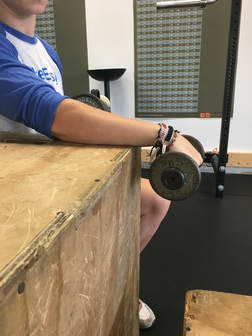

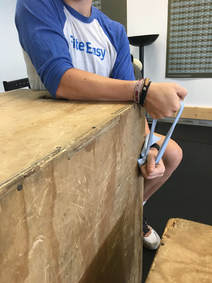
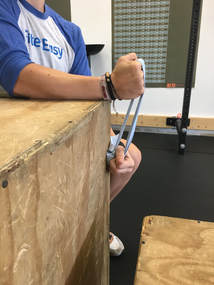
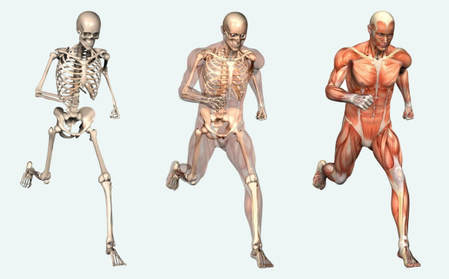

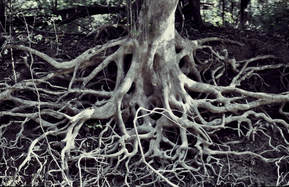

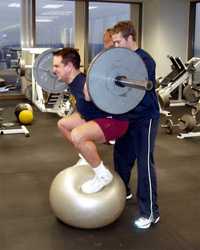
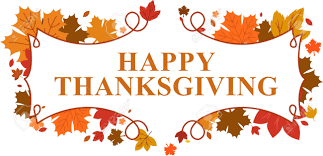

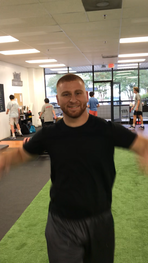

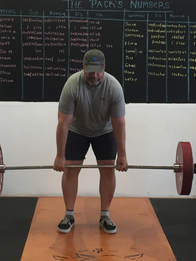
 RSS Feed
RSS Feed